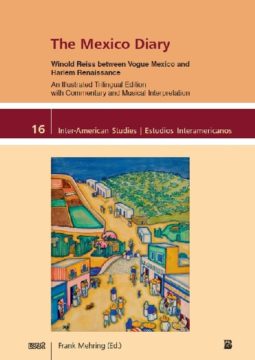The German-American artist Winold Reiss (1886-1953)—painter, designer, teacher—has been characterized as “a modern Cellini,” defying instant categorization and labels. To this day, he remains something of an enigma to art critics. Winold Reiss stands at the beginning of a new American Modernism approach to depicting the vitality of African American culture. In 1920, while struggling through a creative and personal crisis, he went on a two-month-long trip through Mexico. His diary offers a unique glimpse into the artist’s mind and heart. Reading it in conjunction with his drawings helps us better understand the function of Mexican art, folklore, religiosity and the history of mestizaje in the context of the stylizations of the cultural space which James Weldon Johnson called “Black Manhattan.”
The Mexico Diary makes Reiss’s text available in the original German as well as in English and Spanish translations and interlinks it with his sketches and paintings. The book also features an audio CD with key parts of the diary set to music and performed by Jens Barnieck and Frank Mehring.
Winold Reiss’s Mexico diary is a remarkable soliloquy of America’s little known but hugely influential transnational visual artist. We see him traversing borders and breaking free of American materialism to a nature-based vision of New World spirituality. But we also learn that this premier multiculturalist was more successful embracing the New Negro and the New Mexico than the New Woman. In that, he reminds us of the breakthroughs and bugaboos of twentieth century modernism.
-Jeffrey C. Stewart
Professor & Chair at the Department of Black Studies at the University of California, Santa Barbara
Frank Mehring is at the forefront of scholars re-writing the history of American art by focusing on those artists who championed the racial diversity of the New World. In his Mexico Diary, Winold Reiss can be seen as a romantic and a realist: romantic in his rejection of European/American commercialism and realist in his understanding that native peoples have been profoundly influenced by values, religions, and markets that are both European and indigenous.
–Patricia Hills
Professor Emerita, Boston University
- Veröffentlicht am Mittwoch 13. Juli 2016 von WVT Wissenschaftlicher Verlag Trier
- ISBN: 9783868215946
- 244 Seiten
- Genre: Kunst, Literatur, Sachbücher
